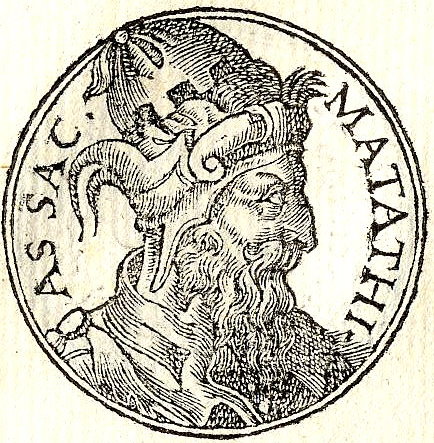In continuing my some-what rambling study of the opening chapters of Genesis I want to begin by thanking Daniel McClellan and John Hobbins for noting and commenting on this series. As I noted on John’s blog, this kind of engagement is incredibly refreshing to me. As a dean I spend all of my time doing very enjoyable things, but none of it is engaging with other scholars in my chosen field (although we have a GREAT group of such scholars here at PSU). So thank you all. Now, let’s get down to bidness.
The order of the day
Yesterday I wrote about what I think Genesis 1 is not and that included being a “scientific” description of how this existence came into…existence. John Hobbins picked this up and offered a counter point that is well aimed and not, as apparently we both agree, entirely contradictory. John writes
How scientific is Genesis 1? In comparison to the presentation of Gen 2:4b and following, I think it does have scientific pretensions – by science, of course, I mean the closest thing to it that existed in ancient times. That is, Gen 1:1-2:4a is, over against EE , other rival accounts of the day, and Gen 2:4b-2:24, demythologizing in more than one sense. No time to go into detail, but I will note this: relative to the rival accounts, and the Chaoskampf myth of creation attested in Scripture (a myth meant to express truth of the highest order, I would add), Gen 1 disenchants the cosmos. For that reason alone, it may be described as proto-scientific in outlook.
(I love that phrase, “Gen 1 disenchants the cosmos.”) I actually agree whole-heartedly, as you will see below, but the reason I shy away from using the term “scientific” is the same reason I avoid using the term “myth.” The terms have very specific meanings in modern use and our redefining them may be useful to us but the average person is unlikely to understand such specialized meanings. 1One of the Dutch editors of my book complained that I did not use enough “technical language” in my work. Oh well. I would rather be understand than obfuscate the object of my inquiry. But I do think that John is exactly on target with my next point of discussion: Genesis 1 presents us with tremendous order and does so in contrast with other origin myths of its era and culture.

Whether we attribute this orderliness and world view to the Priestly source or Moses is, at least for the community of faith, irrelevant. What needs to be discerned and is often missed as a result of trying to “prove” a six-day creation is what the form and content is saying about God and Creation. 2Most of what follows is obvious to those of us who teach Intro to Hebrew Bible/Old Testament (or have ever taken it) but I imagine my repetition won’t hurt anyone and perhaps my own awkward angle will reveal a new perspective to some.
Whether it is out of nothing or from a preexisting substance, God is most certainly ordering this new creation with purpose and intent.
The separating of the darkness into day and night, the waters into heavens and earth and then into seas and dry land, are all part of taming the chaos that all ancient origin stories are so keen to subjugate. This order is present in these stories, we are often told and I see no reason to disagree, precisely because the world we do live in, then as now, is not one of order and people wanted to be reassured that at some point there was some imposed order. It is why I like good, old-fashioned western movies. The bad guys get it in the end and the cowboy rides off into the sunset. Order is restored.
Genesis 1 is telling us a bit more, however. God does not have to conquer any other deities, no tearing apart carcasses of fallen foes and using them as a celestial lean-to. More importantly, there are no other creatures to subdue. The elements (earth, the deep) are there but they are described as nothing more than objects to be moved about like game pieces on a board. We can also add to this list, while jumping ahead in the chronology, that the stars and the “two great lights” (Gen. 1:16) are similarly treated as nothing more than material substance. The reason for the sun and the moon to be described as “the greater light to rule the day and the lesser light to rule the night” is well known; by describing rather than naming the objects the author subtly emphasizes that these are nothing but created things and are not in and of themselves divine beings.
So while these objects, which in other creation myths are granted supernatural status at some stage, are being devalued the ordering of the cosmos reveals God’s singular power. Here is where I would suggest a kind of “scientific” understanding present in Genesis 1. It is obvious upon even a moment’s observation by even the most modern of persons whose sole exposure to nature is the organic arugula in Whole Foods that in order for animals to exist they must have plants (or other animals) to feed upon and those plants in turn must have land to grow upon with regular moisture and sun to nurture their growth. So Genesis 1, with the singular exception of the creation of the lights on Day Four, 3Where does the light created in Day One come from since they celestial bodies do not exist until Day Four? More on that in a subsequent post. Hint: Rendsburg has a nice bit on this, as I recall. It has to do with residence and symmetry. follows a completely logical order.
Light, perhaps created first because dispelling darkness is more vital than even pushing back the flood-waters, is made to shine in a regular rhythm followed by the dome for the sky and then the continents for earth. Then the vegetation appears and the animals, the residents of these domains. Finally, humanity is created to have dominion over all that had been created.
There is in Creation logic, order, power, and sovereignty. These would also be a few very good terms to describe God, don’t you think? The creation reflects the creator; we are to understand from the character of creation (and the retelling of its origins) something about the one who created it.
And that is another aspect of Genesis 1 that we will consider anon.
- 1One of the Dutch editors of my book complained that I did not use enough “technical language” in my work. Oh well. I would rather be understand than obfuscate the object of my inquiry.
- 2Most of what follows is obvious to those of us who teach Intro to Hebrew Bible/Old Testament (or have ever taken it) but I imagine my repetition won’t hurt anyone and perhaps my own awkward angle will reveal a new perspective to some.
- 3Where does the light created in Day One come from since they celestial bodies do not exist until Day Four? More on that in a subsequent post. Hint: Rendsburg has a nice bit on this, as I recall. It has to do with residence and symmetry.



